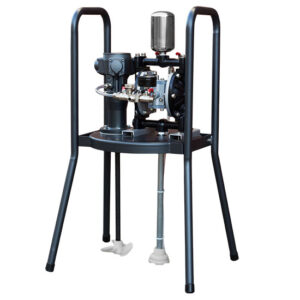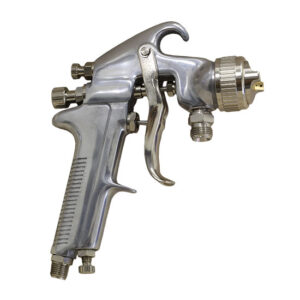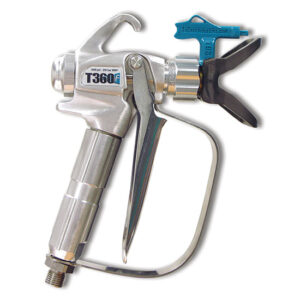About our spray painting equipment
Storm Machinery offers a wide variety of spray-painting equipment for all industrial and commercial applications. We pride ourselves in servicing all pumps that we sell and all spares for working components are readily available.

Advantages of spray painting
- Faster - When it comes to large jobs with strict deadlines, spray painting is the best application method. Spray painting has exceptionally high production rater
- Better finish -Overall, spray painting will leave a very professional look. Spray painting helps ensure a more even coating.
- Better control over Dry Film Thicknesses – Easily adjust/change the spray tip/needle/nozzle size to best suit the specific paint
- Ideal for hard to reach places – More user friendly than traditional roller/brush applications
Pneumatic Airless Spray Pumps
Airless pumps use fluid pressure, instead of air, to atomize paint. As a result, these units can spray almost all types of coatings. A compressor is required to drive the pneumatic air motor of the pump allowing for thicker, more viscous coatings to be sprayed. Applications, including large interior and exterior jobs.
Electric Airless Spray Pumps
Electric spray pumps are multi-purpose units suitable for both commercial and fine finish applications. The greatest advantage of spraying with an electric unit is that there is no need for a compressor. Our electric units require a 220V wall socket to power the electric motors.
Hydraulic Airless Spray Pumps
Our hydraulic spray pumps consist of petrol, diesel, or electric motors. These motors, in turn, powers a hydraulic pump that runs the airless fluid section of the pump. This is a great alternative for site work as no compressor or generator is required. The higher output of these units allows for spraying thicker, more viscous coatings than typical electric airless pumps.
Conventional Spray Pumps
Conventional painting equipment uses compressed air to atomize paint. The air cap of the conventional gun directs compressed air into the fluid stream to atomize it and form the spray pattern. Because of this, they offer a finer finish for smaller industrial applications.
Plural Spray
Plural proportioners spray fast curing, two component coatings. Our units feature the capability of heating the two components of the polyurea spray elastomer system independently to promote the reaction of the system. These two components are sent to an impingement mixing gun where they are mixed/combined and then sprayed. In turn, this makes them suitable for both commercial and industrial spraying of foam, polyurea and polyurethane.
Spray Guns & Hose
Select from a wide variety of airless & conventional spray guns & hoses that best suit your current application/product. Spray tips for airless guns as well as needles & nozzles for conventional guns are easily interchangeable for different applications.
Spray Painting Extras
Storm Machinery’s range of spray-painting extras provide unique solutions and enable versatility for various spray painting applications. Options suchs as gun extensions, spray tip swivels & gun swivels ensure the operator has the correct tools for the job at hand.
What is spray painting
Spray painting is a painting technique in which a paint machine sprays a coating (paint, ink, varnish, etc.) through the air onto a surface. When this happens, the paint breaks up into small particles or a fine mist. This process, in turn, we call atomisation. Spray painting covers large surfaces with an even coating of liquid.

Paint Data Sheets
The best way to match a spray pump to a paint product is to refer to the Product Data Sheet. A Product Data Sheet (PDS) is a document that contains vital information such as the specific volume solids of the paint, the required atomizing pressure of the paint and the specific conventional needle/nozzle or airless spray tip size required for the correct atomization of the product. The PDS will also confirm if the product can be sprayed by an airless system or if a conventional system will be better suited. Certain paint products can not be sprayed and would have to be applied by a brush or roller.














